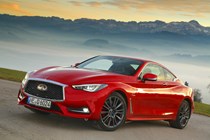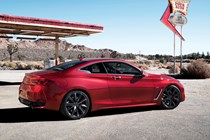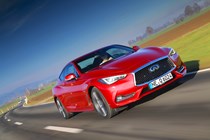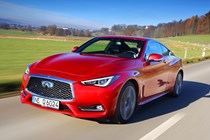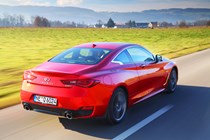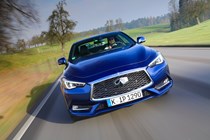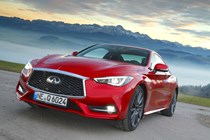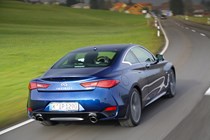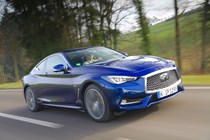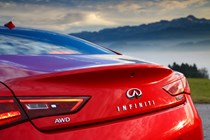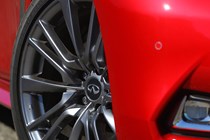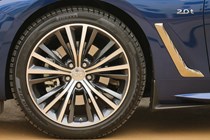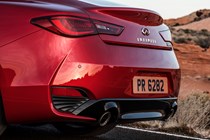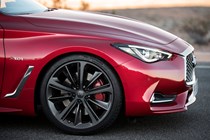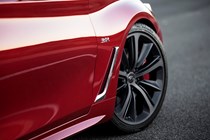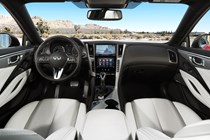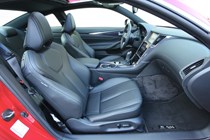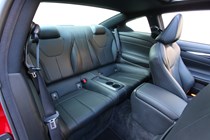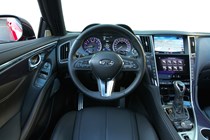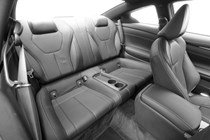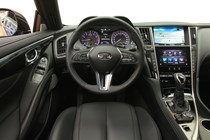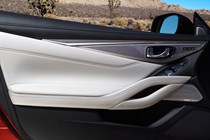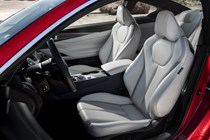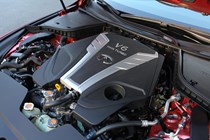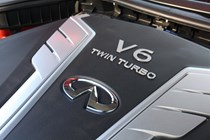
Infiniti Q60 Coupe (2016-2018) engines, drive and performance
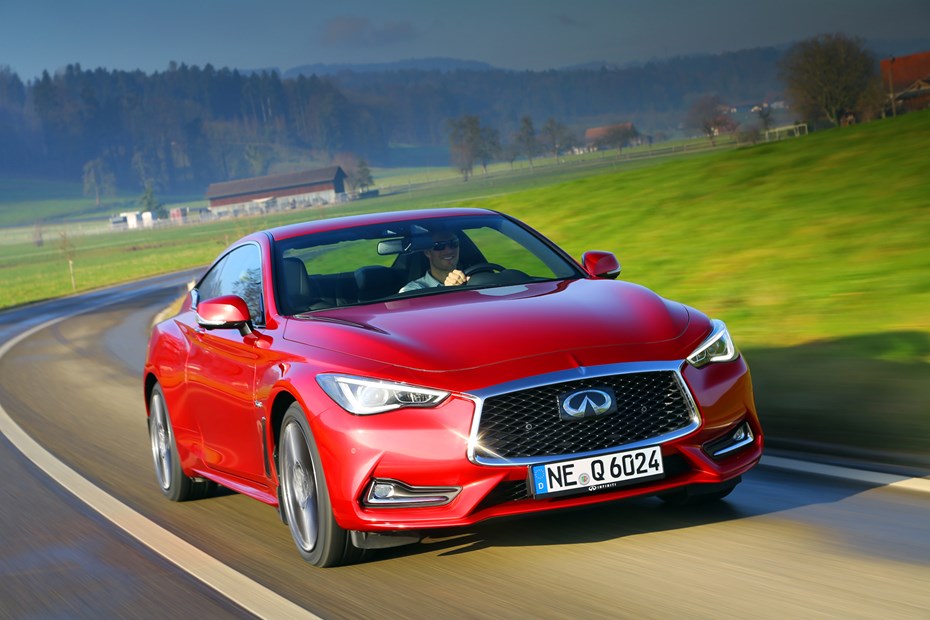
- Two petrol engines, one gearbox
There are two petrol engines in the Q60 line-up, so not a huge range to choose from, and all versions use the same seven-speed automatic gearbox. This functions well, with smooth changes, and higher-spec Q60 models give you the option to change gears using paddles behind the steering wheel.
Infiniti Q60 2.0t
This version is set to be the best-selling model and is available only on lower trim levels. It’s a 2.0-litre turbocharged motor that develops 211hp and 350Nm between 1,250 and 3,500rpm.
That means 0-62mph in 7.3 seconds and a top speed of 146mph, which sound like fairly enthralling numbers, but its acceleration is at best forgettable and it doesn’t sound particularly interesting either.
Infiniti Q60S 3.0t
The performance option is this 3.0-litre V6, which has 405hp to its name along with 475Nm of torque between 1,600 and 5,200rpm. The dash to 62mph drops to five seconds flat, while top speed is electrically governed to 155mph.
This engine is far more exciting, with very high performance from its pair of turbochargers and an accompanying howl as you climb up the rev range.
- Safe and assured handling
- All-wheel drive on V6 model
- Odd optional steering system
The overriding impression of the Q60’s handling is that it’s safe and accessible, but it’s also balanced and rewarding to drive quickly.
The 2.0-litre engine drives the rear wheels only, while the 3.0-litre V6 Q60S features an all-wheel drive system for more assurance and stability in slippery conditions. Neither version is class-leading for entertainment or surefootedness, however, with German rivals offering more compelling options in both senses.
Steering-by-wire
We’ve yet to try cars with the standard steering system, but we’ve had a chance to try Infiniti’s latest Direct Adaptive Steering (DAS) set-up. This is a steer-by-wire configuration that means there’s no direct link between steering and road – it uses electrical systems to carry out the job a steering column would traditionally do.
First introduced on the Q50, critics were outspoken about the original attempt’s lack of feedback to the driver. In the Q60 this has been improved dramatically, with better weighting helping the driver to feel more involved in the experience.
It’s still a strange sensation if you’re used to other cars, both because of a slightly detached sensation and because DAS reacts far quicker to inputs than any other car we’ve driven. It takes a bit of getting used to, but within a few miles you’ll be able to drive the Q60 perfectly well.
Adaptive dynamics
You can adjust the speed/responsiveness of the steering and its weighting using the Q60’s drive modes.
The cars we tried on the launch also featured the firm’s new adaptive suspension system, which allows the driver to pick between softer or firmer damping. Unfortunately, there isn’t a huge gulf between the two, and we ended up leaving the car in the firm setting for the majority of the time.



